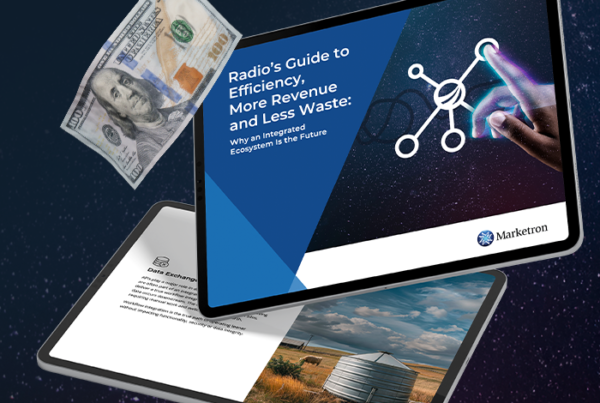Technology is central to any station’s operations and revenue management. Many organizations are begging to reconsider their tech stack as the landscape evolves, but evaluating options can be cumbersome and complicated. You need to identify the capabilities you require and the gaps in your current software that are creating inefficiencies and headaches. Options come down to two media company revenue technology models: best-of-breed or integrated platforms.
As you begin your journey, keep these top factors in mind as you compare solutions.
Best-of-Breed vs. Integrated Platforms
A best-of-breed software strategy involves using multiple vendors and applications. You make choices based on the best product for each use case — traffic, payments and third-party digital. Ideally, these systems are connectable through APIs (application programming interfaces). Connecting them may include extra costs and customization. Depending on the architecture of each solution, linking them may present challenges.
An integrated media company revenue technology approach uses a single vendor. The platform is fully integrated already to ensure efficiency and communication between systems. Thus, it would be an ecosystem of traffic software, electronic services (invoicing, payments and more) and third-party digital.
The advantages of a consolidated system include reduced cost and complexity and greater productivity. Additional integrations with other systems like CRM (customer relationship management) software would also be eligible with this solution via APIs.
So, what’s the best option for you? Let’s look at the things that should influence your decision.
Media Company Revenue Technology: 5 Factors to Consider
When creating your parameters for comparison, pay attention to these areas.
Capabilities
Simply put, you’re assessing the features of individual or integrated systems. In most cases, best-of-breed will have all the functionality you need and much more you don’t. Having things you don’t and probably won’t ever use means you’re paying a premium.
A single-vendor system will have many capabilities designed for local media companies. If there are any holes, they may be on the product map or available with some customization.
Complexity
Using multiple vendors to achieve optimal performance in each area can be complicated. Which vendor do you contact for support after integration? The buying process may also be longer, which could delay implementation. You’ll also have to wait for the API work.
An integrated platform ensures you have one vendor for support and onboarding. User training usually takes less time and fewer resources due to a consistent interface. Processes ranging from user login to data management become more efficient, so people can be more productive. Using a united platform streamlines implementation, integrations, contracts, maintenance, support and more.
Risk
Software systems sunset all the time, and new companies enter markets regularly that don’t make it. So, you have to weigh the risk of this happening, and it more often does with a platform that covers a single use case.
Integrated systems are usually the product of established, financially stable companies deeply rooted in the industry. There can be a risk here. Some older vendors may not be agile or innovating their products, which means they aren’t addressing new requirements. It’s not true for all, though. Many local media revenue technology providers are innovating and investing. Ask the right questions about future features and plans to determine which one a potential vendor falls into.
Cost
Budget is always a determining factor in software decisions. Depending on the size of the stack, a best-of-breed approach can add up quickly. While individual licenses may be less expensive than an all-in-one platform, each system requires its own implementation, integration and support. Users must learn how to use them separately, consuming additional time and resources.
Integrated platforms offer economies of scale. Depending on your users, customizations or tiers, all-in-one systems could have a higher ticket price than individual applications. However, they are more cost-effective in the long run. There’s only one onboarding and training cycle with a dedicated support partner.
Support
Finally, best-of-breed and all-in-one models provide varying levels of support. Best-of-breed vendors are highly specialized, so support teams can be product experts. Depending on their size, they may also be able to respond quickly.
However, you’ll have to interact with multiple vendors for assistance across the system. This can be hard to navigate, and you’ll need these individual support teams to work together on integrations. They may be prone to blame each other if things don’t go smoothly, and you become a mediator.
With a single technology partner, the quality of their support will vary. In the local media industry, an integrated platform comes from a niche provider group. Most have highly experienced employees helping customers. That’s not always true, and some may outsource their help desk. It’s another area to investigate. You have one point of contact for all your needs, making things more convenient.
Revenue Technology Solutions Should Drive Growth and Operational Efficiency
Technology is a key component of all your revenue and operations activities. You couldn’t do much without it. This dependence means your stack should be working for you in every way. As leaders in the industry, we understand your evolving needs. You want to grow and protect revenue, streamline workflows and improve accuracy. We can help you do all these things.
Learn more about how we’re building an ecosystem for local media by reading our e-book, The Modern Traffic Department.







